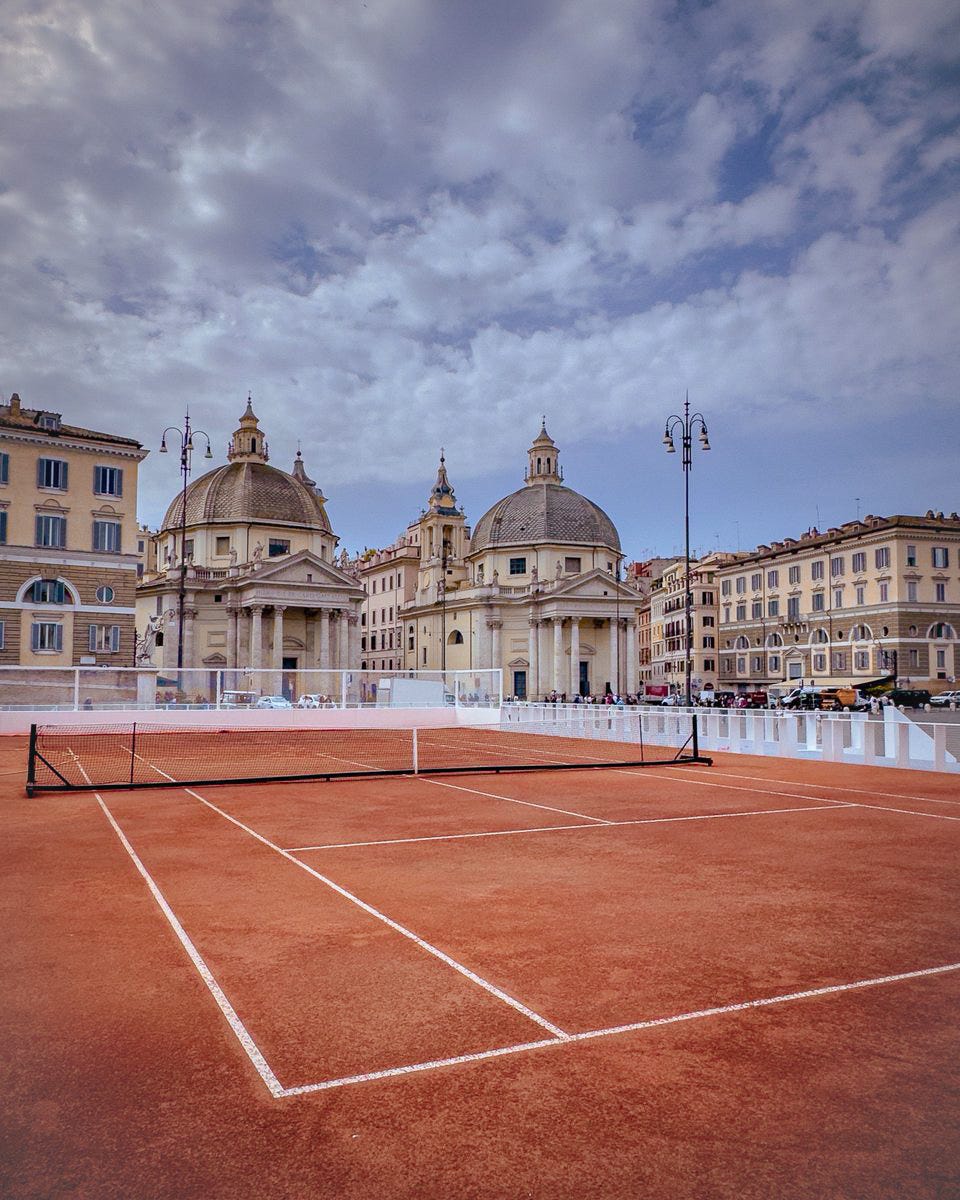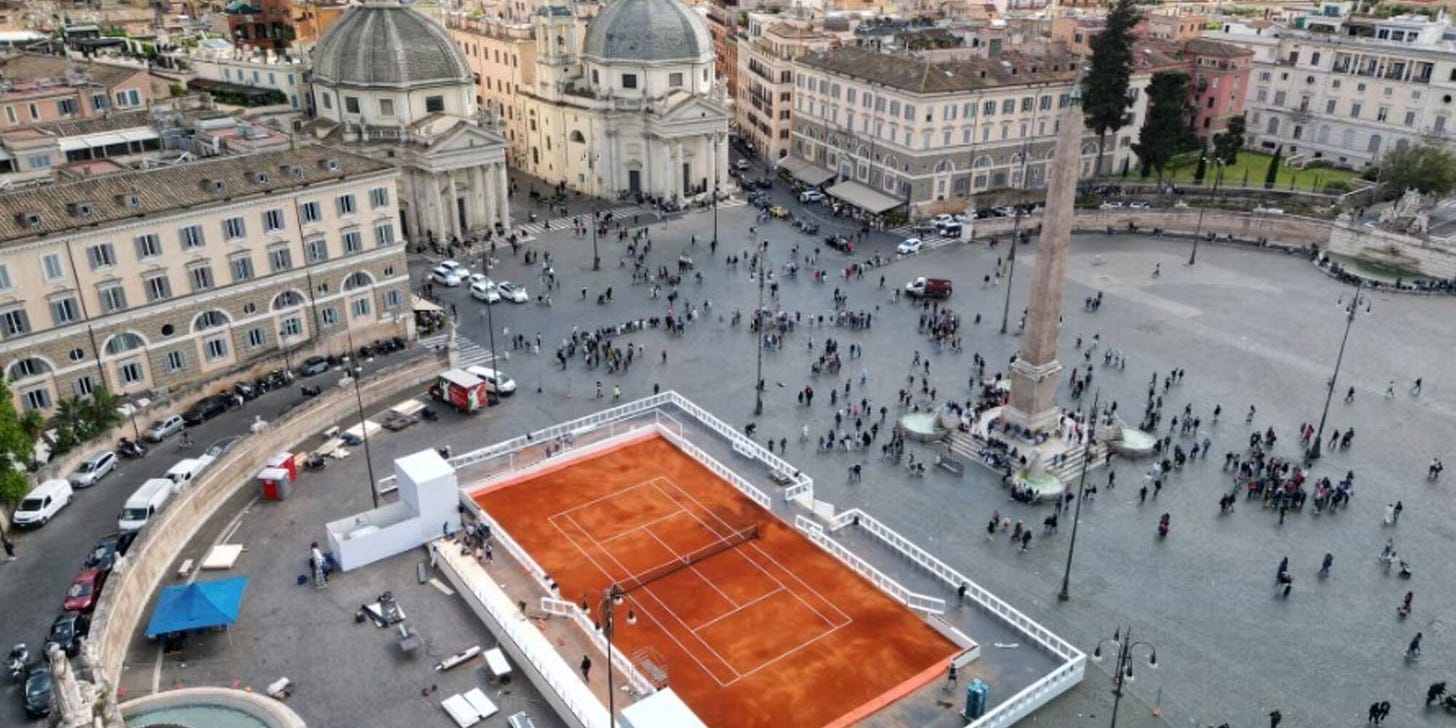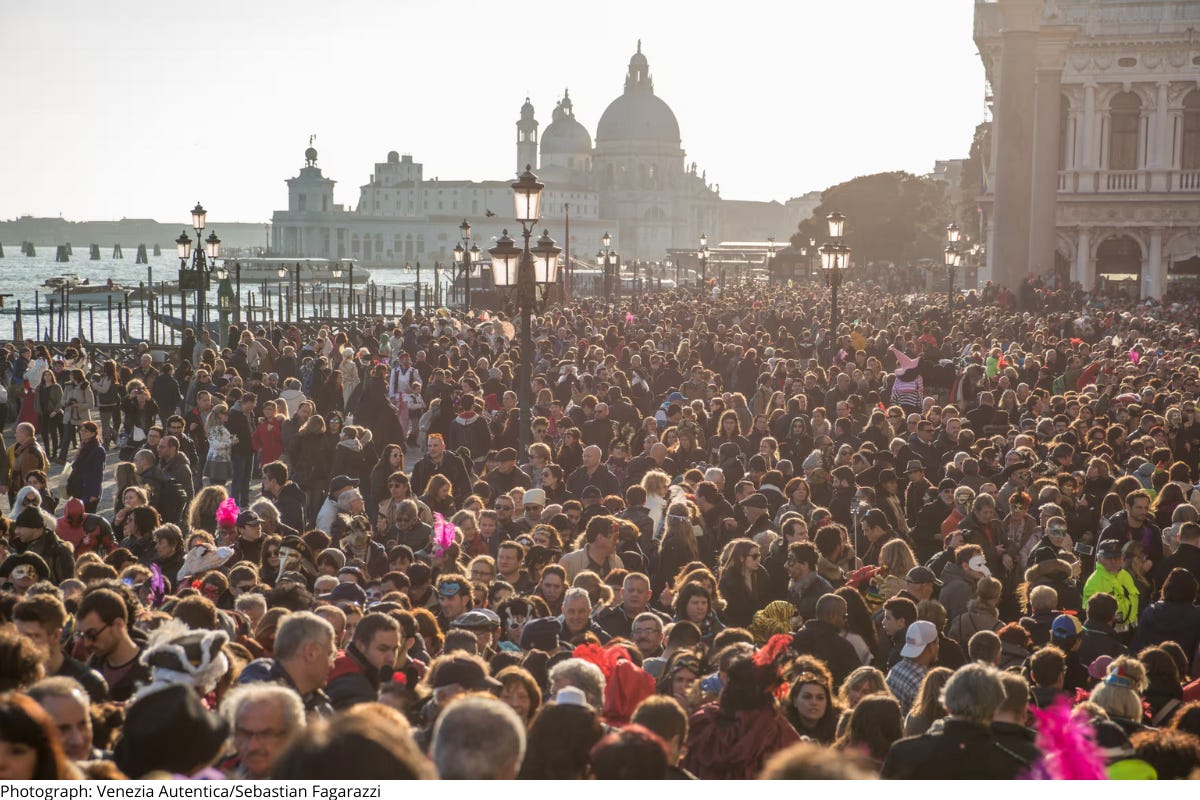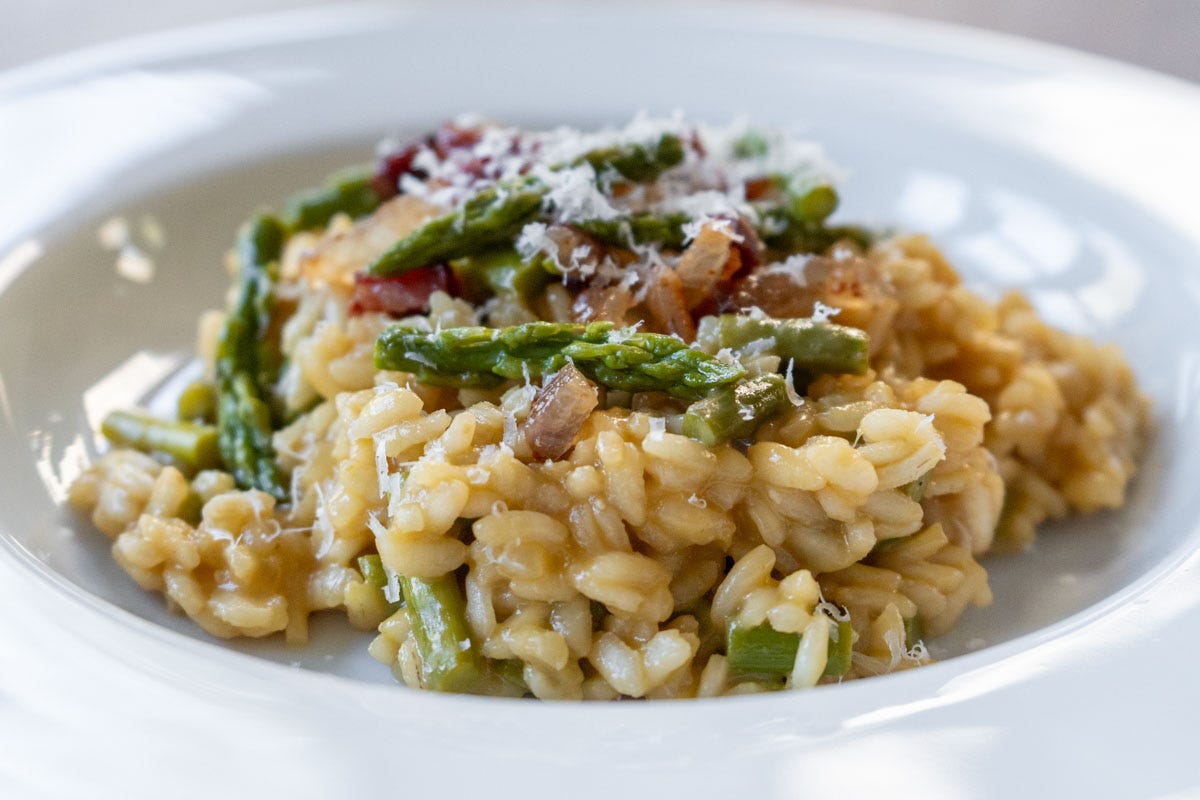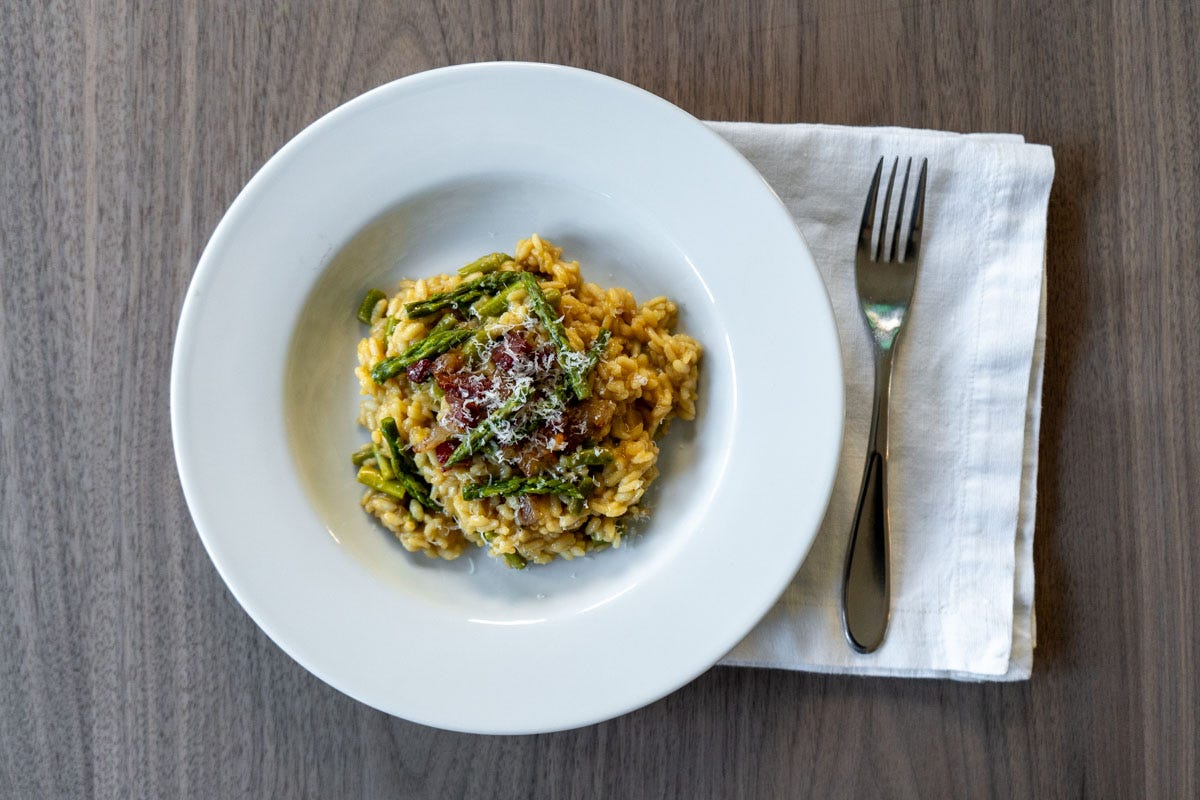It’s spring and there seem to be countless things happening around Italy. Here are a few that caught our attention this month.
The Italian Open
The 2024 edition of the Italian Open starts tomorrow and runs through May 19. The tennis tournament, sponsored by Banca Nazionale d’Italia and thus called the Internazionali BNL d’Italia, is played on clay courts at Rome’s historical Foro Italico sports complex and will feature tennis greats from around the world, including Novak Djokovic and Rafael Nadal on the men’s side, and in the women’s draw, reigning Australian Open champion Aryna Sabalenka and US Open champion Coco Gauff. Sadly, Italian phenom Jannik Sinner and Spaniard Carlos Alcaraz both withdrew due to injury.
In Rome things are done with a flair, so it is only appropriate that a large clay court was set up in Piazza del Popolo to host the pre-qualifying matches. Set in the heart of the city with the iconic twin churches of Santa Maria in Montesanto and Santa Maria dei Miracoli in the backdrop, the matches are open to the public free of charge. Once pre-qualification matches are done, the court will be used for training by girls and boys from Italian Tennis Federation clubs.
Take a look at this video of the unique court from sponsor BNL.
Emily in Paris Rome
Have you watched the Netflix show Emily in Paris, starring actor Lily Collins playing Emily Cooper, a Chicagoan who moves to Paris to work at a French marketing firm? We’ve laughed our way through the series, the cultural discord between the European and American approach to work, life and leisure ringing true despite the shows’s overt stereotypes.
Well, apparently parts of Season 4 will be set in Rome! Collins’ Instagram featured pics of her posing at the Colosseum and the Bocca della Verità (Mouth of Truth). Reportedly, she’s in town to film scenes for the show. There’s not much info yet about the how a Roman holiday will play into the show's storyline; we’ll have to wait until later this year for the release of the 4th season.

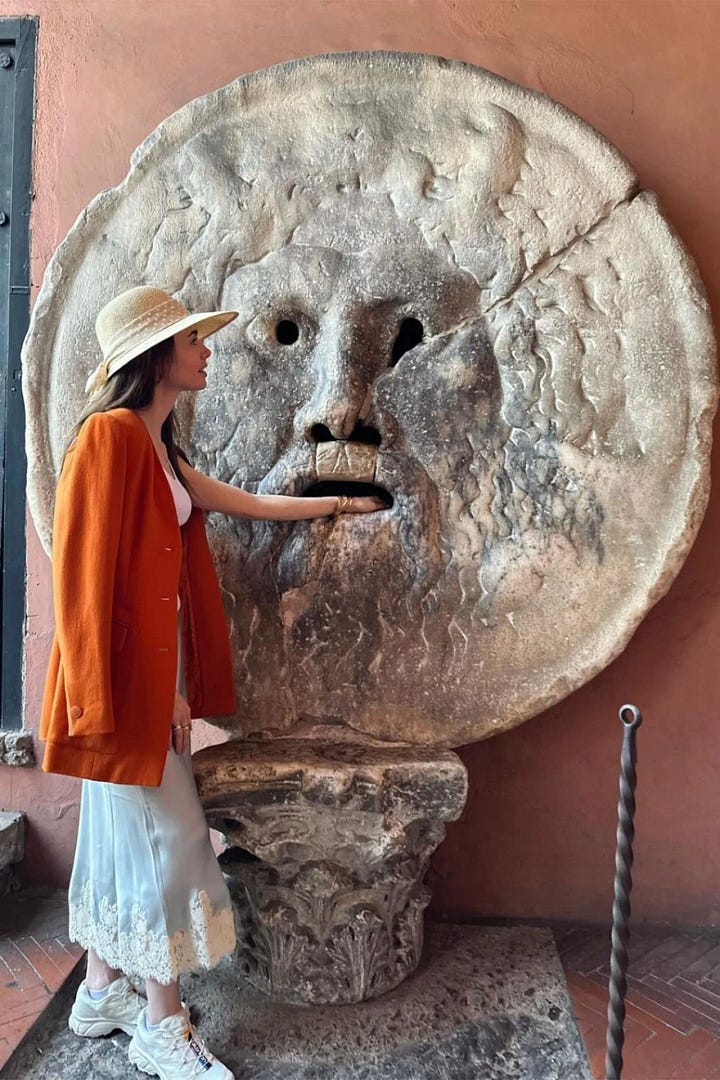
Venice’s Tourist Tax
On April 24th, Venice became the first city in the world to charge an entry fee, in an attempt to quel the enormous volume of tourists that descend upon the city and to make life more livable for Veneziani - Venetians.
The €5 entry fee applies to day-tripping tourists who arrive between 8:30 a.m. and 4 p.m. Tourists who book overnight stays are exempt from the fee, but must show a QR code to pass through the gates located at the main access points of the city.
Reportedly, the entry fee hasn’t slowed tourists down so far. During just one week from April 25th to May 2nd, the city took in over €723,000 in entry fees from roughly 144,000 paying tourists, far exceeding projections and nearly matching the amount city planners expected to bring in over three months.
While the revenue is certainly needed to offset the high costs of managing a city like Venice, some are not sure that the entry fee program will be a profitable endeavor. The national newspaper Corriere della Sera reports that Venice will spend around €3 million managing the system, with expenses ranging from media campaigns to personnel costs for ticket checkers to the online booking system. We hope it does make an impact because something needs to be done to lessen the crowds and preserve the beauty of this unique city.
What we imagine Venice looking like, and what it actually looks like when besieged by tourists:
Risotto agli asparagi
Last week, we wrote about a few of our favorite spring foods. Risotto agli asparagi, or asparagus risotto, is another recipe that deserves a place on that list.
This risotto is heartier and creamier than you might expect from a vegetable-based dish. It's not difficult to make, but it’s a bit involved, making it a perfect weekend dish to make as a team. At our house, I serve as sous-chef, overseeing the chopping, dicing, and ingredient preparation, while Stefano manages stovetop operations.
Not everyone adds guanciale, but we love the extra flavor, bite, and sostanza it gives to the dish.
Ingredients
1 bunch of asparagus
100 grams of guanciale, diced thickly
1/4 of a medium white onion, diced
300 g carnaroli or arborio rice
5 Tablespoons butter
Olive oil
Dry white wine
1 liter vegetable stock
1/2 cup grated Parmigiano Reggiano
Salt
Instructions
Rinse the asparagus and cut off and discard the tough and woody ends. Blanch the asparagus spears m in a few inches of water until tender. Set aside, reserving the cooking water.
Slice off the tips of the asparagus and set them aside in one bowl. Cut the spears into small pieces and set aside in a different bowl.
Sauté the asparagus tips in 1 tablespoon of butter until slightly crispy. Set them aside.
Cook the guanciale down in a fry pan over medium-low heat until crispy—no olive oil is needed. Remove the guanciale and set it aside. Preserve the liquified fat.
Add 2 tablespoons of butter to the fat from the guanciale and sautè the onion until fragrant and translucent.
Add the rice to the onions and stir over low heat until lightly toasted.
Add a dash of white wine to the rice and increase the heat until the wine evaporates.
Add the cooking water from the asparagus to the vegetable stock and warm it over low heat.
Using a ladle, add vegetable stock to the rice a little at a time, stirring continuously and adding more stock as needed until the rice is cooked to al dente. As the rice cooks, add salt to taste.
Add the pieces of asparagus spears (but not the tips) to the rice and stir. Test again for salt and turn off the heat.
Cut the remaining 3 tablespoons of butter into pieces and add it to the rice along with the Parmigiano Reggiano. Stir vigorously until creamy.
Plate the risotto and garnish with the asparagus tips, guanciale and a sprinkling of Parmigiano Reggiano.
Italian Lesson: Mantecare
The recipe for risotto agli asparagi is a great opportunity to explain an Italian cooking technique called mantecare. Mantecare (verb) or mantecatura (noun) is the process of adding butter and cheese to a dish, often a risotto, to render it creamy, as is done in step 11 of this recipe. The translation of mantecare is “to cream,” but as this La Cucina Italiana article explains, that’s not quite sufficient to describe this fundamental technique in Italian cuisine.
The Montalcino House
Stay tuned next week for an update on our Montalcino house - we’ll share the good news and the bad news we learned during our recent video call with Gabriele, our project manager.





